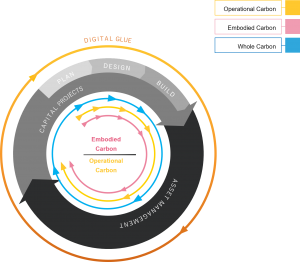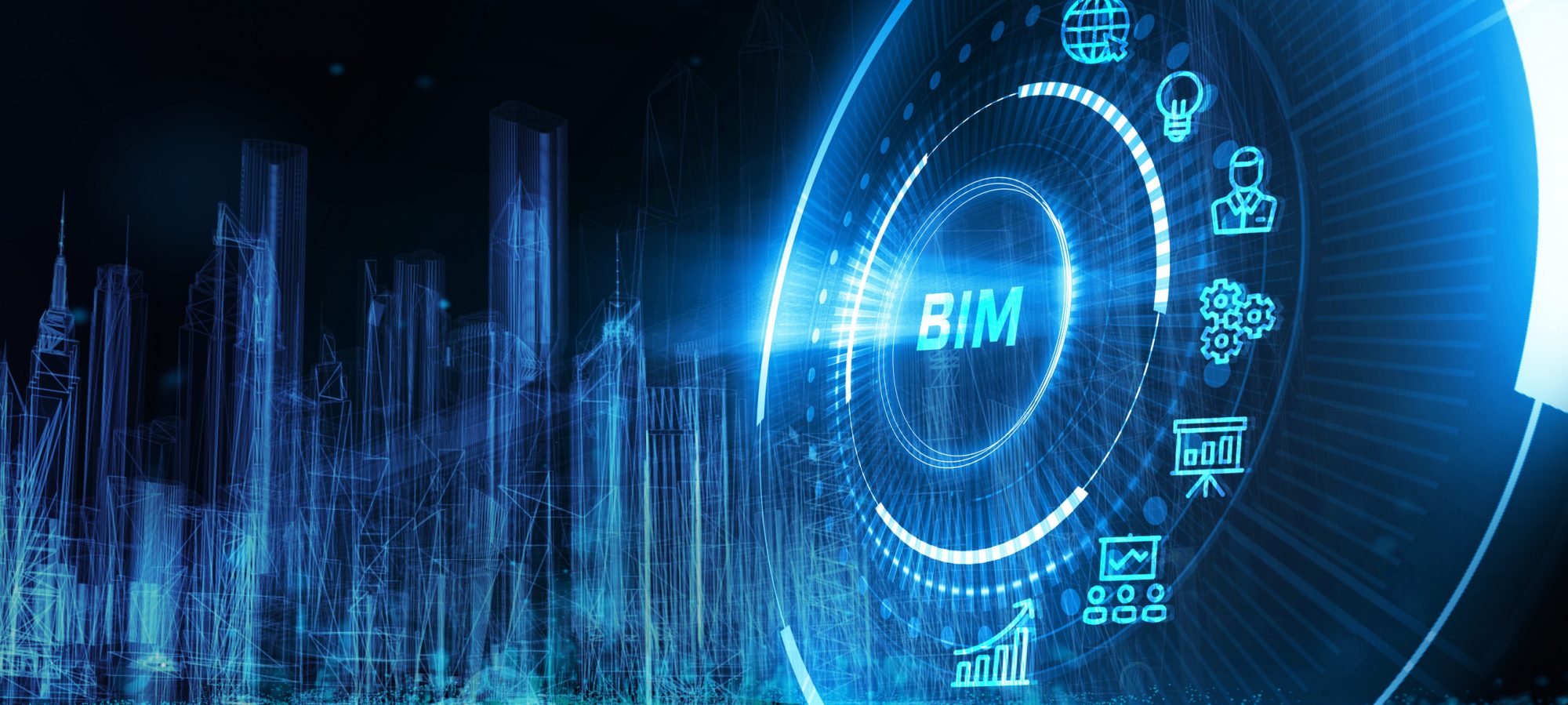Digital technologies such as BIM and digital twins can play a key role in supporting the built environment sector’s drive to net zero, say Shivani Soni and Daniel Giddins of Microdesk
With growing concerns about the rise of greenhouse gases (GHG), the built environment sector is being urged to review current approaches, design more sustainably and incorporate lean construction. Everyone on the team is responsible for reducing GHG and moving emissions towards net zero. Statista reported the UK construction industry produced 12.5m metric tonnes of carbon dioxide emissions in 2019. Since 1990, UK construction industry CO2 emissions have increased by 45%. As a result, the UK government has announced new Building Regulations (Part O) to cut CO2 emissions by 30% on new builds by June 2022.
As such, many organisations are looking to declare net zero commitments by signing up for initiatives such as Architecture 2030, RIBA 2030 Challenge and Construction Declare. Working towards net zero reduction is an ambitious and challenging mission that has gained support from the government and industry thought leaders, who are urging stakeholders to take a more unified approach towards whole-life carbon (WLC), an equation comprised of two parts. The first part is operational carbon, which refers to energy used in buildings. The second is embodied carbon, which refers to products, transportation, construction, maintenance and replacement, and end of life disposal.
Why do AECO organisations need to plan now?
According to the latest data, nearly half of all homes in England, 46%, have an energy efficiency grade of C or better, up from 14% in 2010. The government wants to raise that number by installing low-carbon technology like solar panels and heat pumps to ensure new buildings are appropriately insulated to save energy costs. Improved ventilation is also part of the plan to ensure the safety of occupants in newly constructed homes and reduce the transmission of airborne viruses in new non-residential buildings.
The new regulations will boost standards and are considered a key step toward a cleaner, greener built environment. They are part of the Future Homes and Buildings Standard strategy, which aims to ensure all homes are net zero ready.
June is not far away and AECO organisations should start planning now to play their part in achieving the government’s target. Implementing digital transformation methodologies supports advancement towards designing, building and operating more sustainably. In addition, incorporating processes for predictive and real-time analysis can aid the industry and economy towards net zero goals.
How can digital technologies support progress towards net zero?
Building Information Modelling (BIM) and associated digital technologies can effectively assist AECO professionals in tackling carbon emissions for new buildings. The key drivers behind building CO2 emissions are intrinsically tied into measurable building characteristics. These include, but are not limited to, overall building mass, percentage of glazing, shading and U-Values, which can influence the energy needed to cool and heat the building. Additionally, non-geometric data regarding materials, space and equipment use can be embedded in the BIM model for later reference. With BIM, designers, owners and operators maintain continuous insight into a project’s progress.
It is important to recognise that BIM differs from the traditional CAD process. The production of a manual drawing and a drawing in a CAD environment is virtually the same. One is merely a digitised version of the analogue. The drafter needs a degree of imagination and interpretation to produce discrete snapshots of the proposed building in the form of plans, sections and elevations.
However, BIM is not merely the next stage of drawing. BIM is a building prototype; it is the creation of a virtual building enriched with many of the real-world properties in the end product. By having a virtual, testable building, the AECO industry becomes more akin to other sectors like aerospace and manufacturing because multiple design iterations can be tested to identify the most optimal solution before committing to a final form.
For example, site analysis can be conducted in conjunction with GIS platforms for better land use. Solar gain and daylight analysis can help determine optimal glazing and shading ratios. Non-graphical data can also be used in a carbon-reducing strategy. Similarly, reliable information about individual building materials can be tracked in BIM and help with their repurposing at the end of a building’s life, thus offsetting the material’s embodied carbon. Historically, building information was supplied in an unstructured, ad hoc fashion. However, thanks to established BIM standards like ISO 19650, information garnered from an information model can be seen as reliable and credible, enabling sound decisions regarding a building’s future.
Adopting frameworks like ISO 19650 and the principle of data drops can aid project stakeholders in accepting accountability to address net zero objectives. The ecosystem of digital tools is vast and can become quite complex, and many get overwhelmed in understanding what tools to use, when. When working transparently with set key goals and objectives, digital tools can be leveraged to perform valuable analyses. The key is to define the information requirements that meet the owners’ conditions and set up the project to leverage and examine the data.
What does the future hold?
The industry, including technology vendors and consultants, needs to work together for a uniform approach. Legislation like the new mandate supports this effort. Often, industries need a push from the top, which encourages them to adopt and implement methodologies that help them achieve their goals. Often, the value of investing in digital tools to support the analysis process has not been effectively conveyed. Efforts should increase to show that their value is likely to offset the initial cost increase over time. Historically, the success of construction projects has been measured in purely economic terms. However, environmental and social objectives are increasingly becoming key elements in project briefs.
Looking beyond the static BIM used in design and construction is the digital twin, a virtual representation of a physical asset but fed with real-time data from its corresponding physical twin. As a result, the same level of insight available about a building in the design phase now exists throughout the building lifecycle. This influences building-level sustainability by enabling reactive and scheduled maintenance and interventions and can also aid in citywide carbon-reducing initiatives through further integration into smart city networks.

Shivani Soni
Strategy & innovation lead
Daniel Giddins
BIM solutions specialist

Tel: +44 (0)800 029 4635














